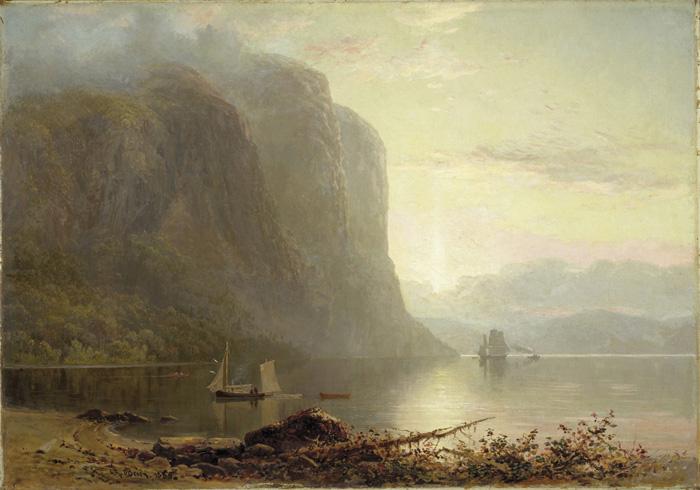Sunrise on the Saguenay, Cape Trinity (1880) was one of five canvases in the first exhibition of the Canadian Academy of Arts in Ottawa in 1880 painted by its president, Lucius R. O’Brien, and the one that he chose to offer up as his diploma work. The Marquis of Lorne, the governor general of the Dominion of Canada (and son-in-law of Queen Victoria), who had both expedited the establishment of the academy and personally chosen O’Brien as its first president, had recommended that each academician be required to donate a significant work in recognition of their position, as was the case with the Royal Academy in London. These “diploma works,” as they are known, would provide the foundation for the collection of the National Gallery of Canada, another pet project of Lorne’s realized in 1880. Sunrise, then, as evidence of O’Brien’s status as the chosen first leader of Canada’s first national arts organization, and as the symbolic first painting in the new National Gallery, was clearly meant to set a standard, but also to send a clear message.
The scene O’Brien had chosen to depict, Cape Trinity—about 55 kilometres up the mighty Saguenay River from where it connects with the St. Lawrence at Tadoussac, downriver from Quebec City—was a site that had already become a widely acknowledged symbol of the majestic landscape to be experienced in Canada. By bathing that icon of Canadian identity in the brilliant light of sunrise, however, O’Brien was suggesting much more. His diploma work quite literally promises a new dawning, an auspicious beginning. The foreground sets the image in place, but then the special moment O’Brien captures of dawn’s first light bathing this majestic natural scene in an atmosphere of almost transcendent splendor, both spiritual and regal, offers the greatest sense of promise. That it is meant, nonetheless, to be understood as both down-to-earth and anticipating a magnificent future is reinforced by the detail of the various vessels displayed: everything from rowboats to the splendid cruise ship in the distance, all working craft that also, bathed in the glory of the new dawn, take on an air of something close to regal dignity. It is an image of aspirant self-identity within an imperial realm that was eagerly embraced by Canadians in 1880, and, to all appearances, still is today.
The original form of this article was published in the Fall 2012 issue of Canadian Art. To read more from this issue, visit its table of contents.

 Lucius R. O'Brien Sunrise on the Saguenay, Cape Trinity 1880 Courtesy National Gallery of Canada / photo © NGC
Lucius R. O'Brien Sunrise on the Saguenay, Cape Trinity 1880 Courtesy National Gallery of Canada / photo © NGC







